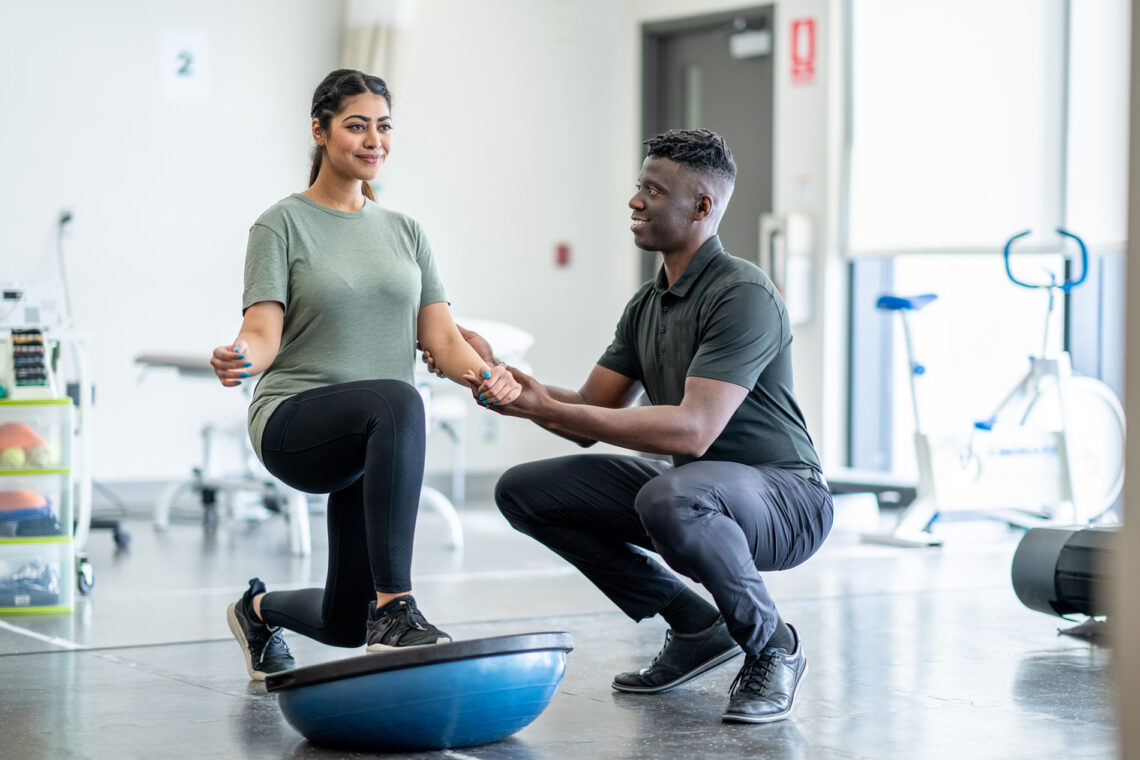Exactly How Physical Specialists Help in Injury Rehab
Physical specialists play an essential role in injury rehabilitation, using their proficiency to assist people in their healing journey. The initial action includes evaluating the nature and extent of the injury, which permits the physical therapist to develop a tailored therapy plan customized to the client's particular demands. Additionally, physical specialists offer education and learning on injury avoidance and self-management, empowering individuals to take an active function in their rehab process.
Examining the Injury and Establishing a Therapy Strategy
To accurately analyze an injury and establish an effective therapy plan, physical specialists systematically review the extent of the injury and its influence on the client's useful capabilities. This evaluation procedure is important as it allows the physical specialist to gather unbiased information and info concerning the injury, enabling them to make enlightened decisions regarding the ideal treatment interventions.
During the evaluation, physical therapists use a selection of strategies and devices to collect details concerning the injury. In enhancement, physical specialists might review medical documents, analysis imaging records, and various other pertinent papers to get a detailed understanding of the injury.
As soon as the analysis is total, physiotherapists use the gathered details to create a personalized treatment plan for the patient. This strategy might consist of restorative exercises, manual treatment strategies, techniques such as warm or cold therapy, and education on injury avoidance and self-management methods. The treatment plan is tailored to address the details requirements and goals of the patient, intending to restore their functional capacities and enhance their overall quality of life.
Making Use Of Hands-on Therapy Strategies
Physiotherapists employ guidebook therapy techniques to resolve the certain needs and objectives of hurt individuals, boosting the effectiveness of their therapy plans. Manual therapy involves hands-on methods that intend to boost wheelchair, decrease discomfort, and promote recovery. These techniques are based upon a detailed understanding of composition, physiology, and biomechanics, permitting therapists to target details areas of the body with accuracy.
One typically made use of hand-operated therapy strategy is joint mobilization. This technique includes the experienced application of pressure to a joint, aiming to restore its regular range of movement. By delicately activating the joint, physical specialists can reduce rigidity, boost versatility, and minimize discomfort.
Soft tissue mobilization is one more hand-operated therapy method regularly utilized by physiotherapists. This technique includes using stress and movement to muscle mass, ligaments, ligaments, and other soft tissues to boost blood circulation, decrease muscle tension, and promote healing.
Furthermore, hand-operated treatment techniques such as massage and stretching can assist kick back muscular tissues, enhance flexibility, and enhance general function (Roanoke physical therapy). These techniques are frequently integrated with restorative workouts and various other therapy methods to attain optimum results
Creating and Supervising Personalized Exercise Programs
Structure upon the manual therapy techniques talked about earlier, physical therapists utilize their know-how to layout and manage tailored workout programs for hurt individuals. These workout programs are customized to the certain requirements and capabilities of each client, taking into account their injury, case history, and general goals for rehabilitation.
The very first step in designing a personalized workout program is to perform a comprehensive evaluation of the person's problem. Physical therapists will evaluate the client's stamina, versatility, variety of activity, and useful capacities. This analysis aids them recognize any kind of locations of weak point or inequality that require to be resolved via targeted workouts.
As soon as the analysis is full, the physical therapist will certainly make a workout program that consists of a range of workouts targeting different muscle mass groups and movement patterns. These exercises might consist of extending, enhancing, balance training, and cardiovascular activities. The specialist will certainly additionally take right into consideration the client's preferences, lifestyle, and readily available sources when creating the program.
As soon as the exercise program is developed, the physical therapist will certainly lead the individual with each exercise, making certain correct type and technique. They will certainly supply assistance and assistance, making changes as needed to ensure the workouts are challenging yet not as well laborious. The therapist will certainly likewise track the patient's progression and make adjustments to the program as the patient's capacities enhance.
Giving Education And Learning on Injury Prevention and Self-management
In addition, physical therapists educate hurt people on injury avoidance and Check This Out self-management techniques. By offering education and learning on injury avoidance, physical specialists encourage people with the knowledge and tools required to lessen the threat of great site re-injury.

Additionally, physical specialists enlighten people on the relevance of adherence to their treatment plan. They explain the reasons behind each intervention and the expected outcomes, making certain that people comprehend the objective and benefits of their treatment. By equipping individuals with this expertise, physical therapists encourage active participation in their own recuperation procedure, cultivating a feeling of ownership and obligation for their well-being.
Monitoring Progression and Adjusting Therapy as Required

Physiotherapists make use of numerous methods to monitor development. They examine the individual's variety of movement, stamina, versatility, and general practical capabilities. They might likewise utilize specialized tests and measurements to track enhancements and recognize areas that require further attention.
By very closely checking the progress, physiotherapists can determine any type of potential barricades or obstacles that may arise throughout the rehab process. This allows them to make prompt changes to the treatment plan, guaranteeing that the therapy continues to be relevant and reliable to the person's demands.
Adjustments to the treatment plan might consist of modifying workouts, decreasing the strength or enhancing of treatment, or introducing brand-new methods or modalities to attend to particular locations of worry. The goal is to optimize the recovery process and help with a quicker and much more complete recuperation for the person.
In enhancement to checking progression and adjusting therapy, physiotherapists additionally give continuous education and assistance to their clients. This helps them comprehend their condition much better, advertises self-management, and empowers them to proactively take part in their own healing.
Conclusion
In conclusion, physiotherapists play a crucial duty in injury recovery. They examine injuries, establish therapy plans, make use of manual therapy techniques, layout tailored workout programs, supply education and learning on injury prevention and self-management, and display progress. With their knowledge and support, physiotherapists help individuals recuperate from injuries and reclaim optimal function and flexibility.
